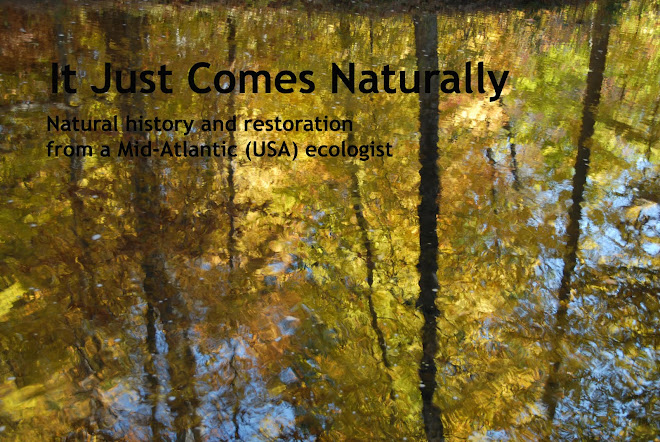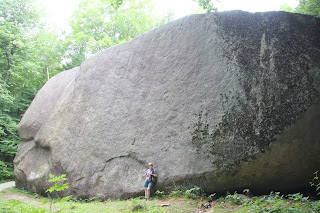 |
| At the head of Chesterfield Gorge (note man in lower left for scale) |
On our way to our friend's/host's house in New Hampshire, we passed a tiny wayside just after we crossed from Vermont into New Hampshire. A sign said Chesterfield Gorge State Natural Area. But it was already late, we'd been driving for about five hours, and we had four hours more to drive, so we passed it up.
Before we left our friend's house to head home, though, I'd already decided to check out Chesterfield Gorge as we drove back. That, and the fact that I had Googled Chesterfield Gorge to find out that it likely was worth a half-hour break.
 |
| Upper middle gorge |
 |
| Lower middle gorge - the most impressive section |
I did notice one really strange (to my eyes, anyway) feature of the natural area: the deep, dark woods surrounding the upper end of the gorge were completely bereft of understory vegetation - completely bare. I don't know if the forest was so dense that the meager sunlight that managed to get through the canopy couldn't support shrubs and small trees, whether the deer population is so high that they've eaten all the low vegetation, or if there was some other explanation. Lower in the gorge, the surrounding uplands did support some understory growth.
 |
| Lower gorge and plunge pool |
One last aspect of our vacation. Our route back home required that we travel through or near New York City. My first inclination was to take the Tappan Zee Bridge over the Hudson about 25 miles north of New York, but our friend had cautioned us that the Tappan Zee is being replaced with a new bridge and traffic is usually bad as a result, so I was inclined to bite the bullet and drive through the heart of New York over the George Washington Bridge on I-95. As we approached the New York metropolitan area, there was a curt, enigmatic electronic sign along the road warning drivers to seek an alternative to the Tappan Zee Bridge - bad construction traffic, I assumed. I assumed wrongly, as it turned out. What had happened was that a construction crane on the new bridge had fallen onto the old bridge at noon, completely closing the bridge in both directions. All traffic had to find alternate routes. The next bridge north across the Hudson is a long way north, so most drivers decided to come through New York. Needless to say, traffic was a nightmare. We inched along for nearly 13 miles before getting to the George Washington Bridge. Our already long drive back (9 hours without traffic) took us 11 hours. Another good reason to avoid New York!




















































